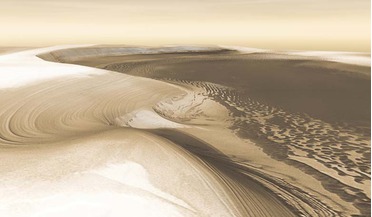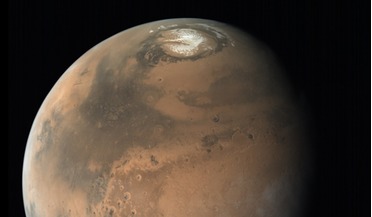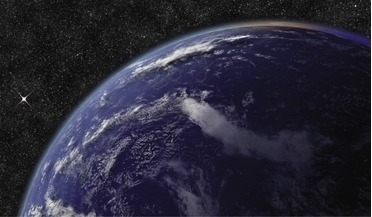 27 May 2016
Scientists reveal Mars is emerging from an ice age
27 May 2016
Scientists reveal Mars is emerging from an ice age
... the mostly dry, dusty planet is emerging from an ice age, that ended about 400,000 years ago. Models have suggested... the SHARAD radar images. Models predict that following a Martian ice age that ended about 400,000 years ago, polar deposits would ...
 22 January 2020
2.2 billion year old impact crater is confirmed as Earth's oldest
22 January 2020
2.2 billion year old impact crater is confirmed as Earth's oldest
...planet and with an age of 2.29 billion years, it might have also helped end a long-term ice age. Yarrabubba crater in... conditions. If the meteorite hit Earth when it was covered by an ice sheet between 2 to 5 kilometres thick, up to half a trillion...
 27 May 2019
Third largest water reservoir on Mars found
27 May 2019
Third largest water reservoir on Mars found
... Institute for Geophysics (UTIG), think that the alternating layers of ice and sand are a result of retreating and advancing ice caps as the planet underwent periodic ice ages - much like Earth has experienced in the past. In Mar’s case...
 March 2022
Space travel and environmental sustainability
March 2022
Space travel and environmental sustainability
...well-publicised challenges, including natural disasters with global effects – such as asteroid impacts, supervolcano eruptions and ice ages; the ever-present threat of nuclear weapons, extremism and other political issues; and the overbearing spectre...
 03 August 2020
Mars was cold and icy, not warm and wet, new study says
03 August 2020
Mars was cold and icy, not warm and wet, new study says
... beneath ice sheets, can also gouge out chunks of the ground. Earth has witnessed a few ice-age periods where...to those eroded by either rivers or water in channels beneath ice sheets. “This picture alters the current understanding that all Martian ...
 10 May 2016
When sunspots are minimal, the solar magnetic field is at a maximum, say researchers
10 May 2016
When sunspots are minimal, the solar magnetic field is at a maximum, say researchers
... when harsh winters across Europe and the UK were often severe and is known by climatologists as the “Little Ice Age.’ “Thus far, we have only been able to examine what is visible on the solar surface, but simulations enable...